Gene Fish's Blog, page 2
August 5, 2018
Military Area and Other Areas with Flight Restrictions
SUAs: prohibited, restricted, and military operations area

Certain areas within airspace are segregated by the government for national security or national welfare concerns. These areas are either private or public property that requires constant protection or military areas that pose hazardous threat to civilian airspace users. These fields requiring such segregation or restrictions are called Special Use Airspace (SUA).
Special Use Airspace includes Prohibited, Restricted, National Security Area (NSA), Warning Areas, Military Operating Areas (MOA), Alert Areas, and Controlled Firing Area (CFAs). But we’ll focus on just three areas which are most vital in navigating aerial flights.
Prohibited Area
This is the most restrictive form of SUA within which nobody can fly across except those with permission from the using agency—which are rarely given. It is important to know where they are located since violating this regulation would result in military interception or an attack upon the violating aircraft. In the aeronautical charts, it is depicted with the letter P, followed by two or three-digit number. These areas are rather rare and usually only those who fly the POTUS are allowed to pass. All these areas are active continuously, which range from presidential homes, NASA facilities, and Disney World to naval bases and the notable Area 51.
Restricted Area
Areas within this category, while not entirely prohibited, are subject to restrictions. This means you cannot operate an aircraft within its range without getting permission from the controlling agency. Usually, the area contains hazardous operations such as areal gunnery, artillery firing, and flight of guided missiles that might endanger nonparticipating aircraft. The controlling agency will deny you permission if the airspace is “active,” meaning military operations are ongoing, and can only fly through them when it is “cold” or “inactive.” However, speaking with the controlling agency prior to entering is highly recommended in case you might read the altitude or times wrong, risking interception or revocation of your license.
Military Operations Area
These areas are established to segregate nonhazardous military flight activities from nonparticipating aircrafts. In these military training areas, flying through its parameters is not restricted nor prohibited. However only cleared aircrafts are permitted through the airspace, depending on the flight rules used due to the dynamic operations in the airspace. VFR (Visual Flight Rules) pilots may speed through the airspace even when it’s “active,” but must still exercise extreme caution. While Instrumental Flight Rules (IFR), on the other hand, may have to route around an MOA unless approved separation is provided by the ATC (Air Traffic Control). Researching preflight military area codes may be of great help to warn you of these military areas.
Things to Remember
To avoid problems during your flight, it is important to note these three basic strategies:
First, research beforehand the types of SUAs found along your route of flight and the requirements of each.
Second, be briefed properly so you would know the active and inactive zones.
Lastly, keep contact with the controlling agency whenever possible to stay clear from last minute SUA and TFR issues.
Learn more about aviation through my book Ol’ Shakey: Memories of a Flight Engineer and also discover my story navigating the world of military aviation. For more updates, follow me on Facebook, Twitter, or Goodreads.
References:
CFI Notebook. “Special Use Airspace.” Notebook. Accessed July 17, 2018. http://www.cfinotebook.net/notebook/national-airspace-system/special-use-airspace.
Fritts, Sarah. 2017. “Everything You Need to Know About Prohibited Areas.” Think Aviation (blog). March 15, 2017. http://thinkaviation.net/prohibited-areas/.
Williams, James. “Where Not to Go: A Review of Special Use Airspace.” FAA Safety Briefing (January/February 2015): 12–15. Accessed July 17, 2018. http://www.labace.org/assets/seg-voo-where_not_to_go.pdf.
The post Military Area and Other Areas with Flight Restrictions appeared first on Gene Fish.
July 1, 2018
Air Travel and Its Constraints
Why are temporary air travel restrictions necessary?
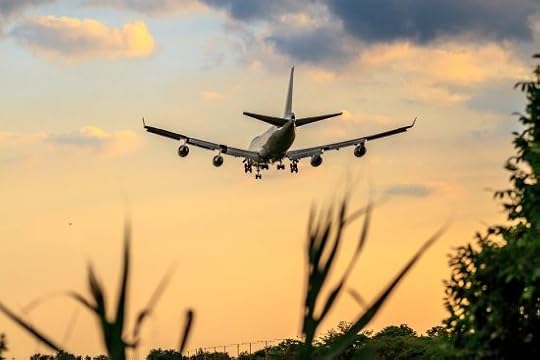
Issued by the Federal Aviation Administration (FAA), TFRs are notices that restrict air travel to certain areas that can cause flights to be delayed, cancelled, or rerouted. So why are TFRs necessary?
What Is a TFR?
A temporary flight restriction (TFR) is a type of notice to airmen (NOTAM), a notification in the field of aviation issued by an official body to alert aircrafts or other airspace users of hazards along the route, both in the air and on land.
Temporary flight restrictions are notices issued to temporarily restrict aircrafts from flying through a particular area and must change route to avoid it. These air travel restrictions may be due to some special events, government activities, natural disasters, or circumstances that are seen to be a danger to the people on ground or in the aircraft.
A TFR is not something to take lightly for these notices are issued to ensure the safety of the people as well as properties. Violations regarding the implementation of TFRs can lead to suspension of the pilot’s license, civil penalty, or imprisonment. This flight restriction notice does not only pertain to manned aircrafts but as well as unmanned pilots (drones). Since TFRs are temporary, it should be regularly checked before each scheduled flight. The website of the Federal Aviation Administration posts the list of TFRs and air travel map that indicates the flight restriction designations.
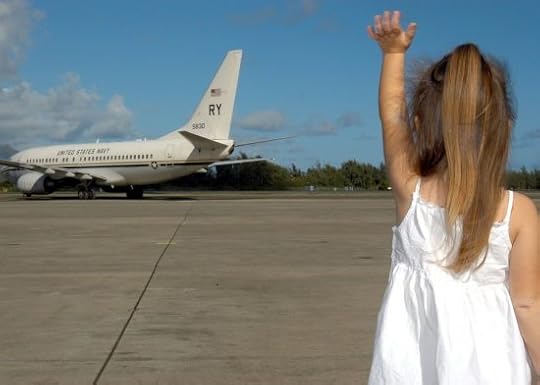
What Are the Types of TFRs?
There are eight types of TFRs with varying reasons surrounding the issuance of these restrictions as well as the persons who can operate in these areas during the time they are issued as indicated in the Federal Aviation Regulations (FAR).
Disaster/Hazard Areas Temporary Flight Restrictions
This flight restriction prohibits aircrafts to operate in the identified area due to specified hazard or condition so as to ensure the safety of persons and property on the ground or in the air from an incident on the site or to provide a safe environment for the operation of aircraft relief activities following a disaster. Only aircrafts participating in the relief activity with directions from an officer or an officer carrying law enforcement officials may operate within the area.
National Disaster Areas in the State of Hawaii Temporary Restrictions
This is a notice requested by the governor of the State of Hawaii or the governor’s designee to protect a declared national disaster area for humanitarian reasons. The NOTAM is effective for 90 days or until the national disaster designation is terminated.
Emergency Area Traffic Rules
This NOTAM is issued when the administrator determines an emergency in accordance to the FAA’s rules and regulations and air travel conditions.
Flight Restriction in the Proximity of the Presidential and Other Parties
No aircraft may operate over or at the vicinity of any area where the president, vice president, or other public figures are visiting or travelling by.
Flight Limitation in the Proximity of Space Flight Operations
This is a NOTAM issued within a designated area where space flight operations are performed.
Temporary Restriction on the Flight Operations during Abnormally High Barometric Pressure Conditions
This means no aircraft should operate due to high barometric pressure on the flight route.
Management of Aircraft Operations in the Vicinity of Aerial Demonstrations and Major Sporting Events
This restricts aircrafts to operate due to an aerial demonstration (e.g., United States Naval Flight Demonstration) or a major sporting event in the vicinity (e.g., Major League Baseball All-Star Game). There are many factors surrounding the issuance of the NOTAM, like the area of the activity, degree of public interest, the number of possible spectators, weather, and more factors mainly focusing on the safety of persons in the area.
Special Security Instructions
Any aircraft operating within an ADIZ or Defense Area must, at all times, comply with the issued special security instructions by the Administrator.
Though there are a number of factors on the issuance of air travel restrictions, there is only one reason of its existence and that is to ensure the safety of the public. This reason is enough to say that temporary flight restrictions are necessary enough to aviation.
Want to learn more about aviation and my story as an aircraft engineer? Read my book Ol’ Shakey: Memories of a Flight Engineer. For more updates, follow me on Facebook, Twitter, or Goodreads.
References
Davidson, Jason. 2014. “Temporary Flight Restrictions: What You Need to Know.” Universal Weather & Aviation, Inc, June 30. Accessed May 4, 2018. http://www.universalweather.com/blog/2014/06/temporary-flight-restrictions-what-you-need-to-know/.
Rupprecht, Jonathan. “TFR (Temporary Flight Restrictions).” Rupprecht Law P. A. Accessed May 4, 2018. https://jrupprechtlaw.com/tfr-temporary-flight-restriction.
Snowflake Software. “The Top 7 Things You Need to Know About NOTAMS.” Accessed May 3, 2018. https://snowflakesoftware.com/news/top-7-things-need-know-notams/.
The post Air Travel and Its Constraints appeared first on Gene Fish.
June 25, 2018
Acing Your Biennial Flight Review
Tips to pass your biennial flight review
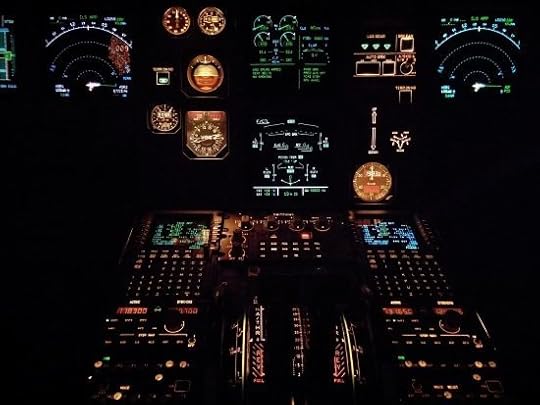
A previous article gave an overview on the biennial flight review and its importance. Here’s a brief refresher to keep you up to speed: the exam is a mandated requirement by the Federal Aviation Administration (FAA) for pilots to continue exercising their privileges.
How often should pilots take a flight review, you ask? The FAA requires them to comply with this for every two years. Pilots looking to fly to the skies for many years know that this test is a must.
If you’re planning on taking your review soon, here’s a head’s up: new flight review rules have been released. These changes were made to address concerns in technology, accident reductions, recent flight experiences, and instrument proficiency checks (IPCs). Just keep tabs on the FAA and other reliable sources for any updates.
Remember, the FAA isn’t out to revoke licenses, so this exam shouldn’t be avoided like the plague. However, it doesn’t mean that it shouldn’t be taken seriously. To keep your aviation dreams alive and well, here are a few tips to pass your biennial flight review for your comfort:
Don’t cower away. The first step to passing the exam is to show up for it. Make sure to take it before the deadline passes.
Honesty is the best policy in answering. Certified flight instructors (CFIs) conducting the exam are tasked to test your knowledge on current regulations. If you’re having trouble with some areas, be sure to make them clear instead of being dishonest.
Make safety a priority. The last thing CFIs need are unsafe pilots. Although not every flight is a guaranteed smooth-sailing journey, remember to put safety as your first order of business. Make sure to relay your strategies to your instructor so that they’ll know what you’re up to.
Questions are important. Although they’re administrators, CFIs are usually willing to answer inquiries examinees may raise while reviewing. In fact, it’ll give them a positive impression of you.
Work on your weaknesses. Aside from being a requirement, a biennial flight review is also a learning experience. If you feel you have a lot of areas to improve on, get up and put in the work.
What are your secrets to acing your biennial flight review? Comments, questions, and discussions are very much welcome. Feel free to relay them by sending a message or via Facebook, Twitter, and Goodreads. You may also check out my book, Ol’ Shakey: Memories of a Flight Engineer, as well.
References
Lind, Bobbie. 2016. “5 Tips to Pass Your Biennial Flight Review.” Bobbie Lind (blog), September 21. Accessed May 25, 2018. http://bobbielind.com/5-tips-to-pass-....
Redbird Landing. n.d. “Here’s What You Need to Know about the New Flight Review Rules.” Accessed May 25, 2018. https://landing.redbirdflight.com/pos....
The post Acing Your Biennial Flight Review appeared first on Gene Fish.
June 17, 2018
Biennial Flight Check
Top reasons why pilots must take their biennial flight review
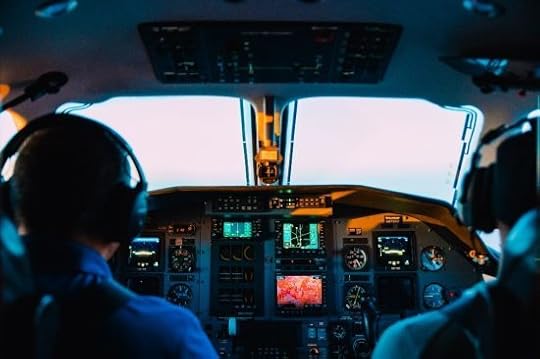
Being a certified pilot doesn’t mean that one already knows how to properly fly a plane for the rest of his/her life. After all, seasons change, skills deteriorate, and aeronautic innovation is constantly taking place every now and then. To maintain safe flights in all aircrafts under his/her command, a pilot must constantly hone his/her aviation skills. One way to do this is to take a biennial flight review.
The Federal Aviation Administration (FAA) of the United States requires all pilots to take a flight review every twenty-four months—or two years—to be able to solely command an aircraft, thus this review is commonly referred to as biennial.
Before a flight review, the biennial flight review preparation process should determine the pilot’s familiarity both in the air and on land. In the actual assessment, the pilot up for review is tested for an hour of flight instruction and another hour for ground instruction. Both the pilot and the flight instructor should understand the details of the review—basic content and the areas included in the oral and flight operations—before the exercise commences.
During the biennial review, the instructor assesses the pilot’s flying skills to check if there are any areas of improvement that need to be addressed as it affects the overall safety of the flight.

After careful evaluation from the flight instructor, he/she will determine if the pilot is capable to handle the plane or not. If the pilot passes, the instructor will issue an endorsement to the FAA, certifying the pilot capable of flying an aircraft for the next two years until the next flight review. In case the instructor is dissatisfied with the pilot’s performance, the instructor will postpone the logbook endorsement until further assessment.
This endorsement by the flight instructor is the pilot’s ticket to solely command his aircraft. If the endorsement was not acquired nor current, the pilot may assume the second in command and as a backup pilot even if he/she is certified.
Another reason pilots should take a biennial review is so that they can be regularly updated on the current regulations as well as the operating practices and relearn and expand their flight skills. It is the sole responsibility of the pilot to carry passengers and other valuable items safe from takeoff to landing. This is the reason it is necessary to have them assessed and closely monitored by the FAA.
In short, the definition of biennial flight review means that the pilot should be able to complete a series of tests conducted by his/her flight instructor every two years. This is necessary for them to be granted an endorsement as the pilot in command of an airplane.
It is good to be reminded of the essential flight elements. This way, all pilots would be proficient in flying planes. For more flight refreshers and exciting flight experiences, read Gene Fish’s Ol’ Shakey: Memories of a Flight Engineer. Visit his website at www.olshakeyflightengineer.com. To get recent blog updates, like his page on Facebook, or follow him on Twitter and Goodreads.
References:
Landsberg, Bruce. 2006. “Pilot’s Guide to the Flight Review.” Air Safety Foundation. Accessed on May 2, 2018. https://download.aopa.org/epilot/2007/sa03.pdf.
Matt. December 8, 2016. “What to Expect on a Biennial Pilot Revalidation Flight.” Digital Pilot School. Accessed on May 2, 2018. http://digitalpilotschool.com/biennial-pilot-ravalidation-flight/.
The post Biennial Flight Check appeared first on Gene Fish.
June 4, 2018
The Aerodynamics of Flight
Introduction to aerodynamics following rules and procedures
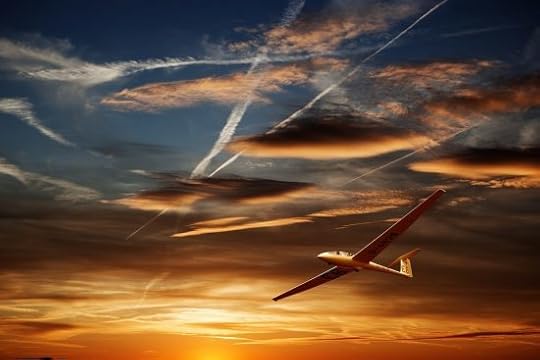
At its most basic level, an airplane is a huge vehicle that flies. And as it flies, it also carries with it a great amount of weight. But how does an airplane move through the air, considering its size and mass? Are there any forces that help a plane move and remain steady aboveground?
The foundations of aerodynamics are composed of the four forces of flight that aerodynamics follow, and these are weight, lift, drag, and thrust. Weight refers to the gravitational force emanating from the center of the earth. This counts the people inside the airplane, its lift-designed wings, the baggage and the freight, and, due to its large scale, it allows the airplane to move down. This is adjacent to another aerodynamic-force called “lift.” This force usually comes from the wings of an airplane, and its magnitude depends on the weight of the plane. It creates pressure and complements the force that the airplane’s weight contributes, and this allows the airplane to move up. On the other hand, drag is another aerodynamic-force pulling the airplane from its point of direction. This force acts the same as with the lift—it also creates pressure. The force lift and drag refer to is the center of pressure, which is somehow similar to the center of gravity. As an airplane moves through the air, the gravity of the force depends on the surface of the airplane. The drag allows the airplane to move slower than its usual pace.
In overcoming the drag of the airplane, there is another force called thrust. This is forcing the airplane toward its main point of direction. This allows the airplane to move faster. It equals the force that the drag contributes. To maintain the aerodynamics of flight and the composure of the airplane in the air, the thrust must counterpart the opposing force, drag. This also means that the lift must complement the weight of the object.
Aerodynamics is composed of the combined forces of weight, lift, drag, and thrust. It is the way these forces work as a team to keep an airplane in the air. The principles of aerodynamics explain how an airplane follows rules and procedures to fly.
For more information on the forces of flight, follow me on Facebook, Twitter, or Goodreads before the airplane departs. Great and exciting articles are waiting for you!
References:
May, Sandra, ed. “What is Aerodynamics?” NASA Knows! Aug. 7, 2017. Accessed April 2, 2018. https://www.nasa.gov/audience/forstudents/k-4/stories/nasa-knows/what-is-aerodynamics-k4.html
Smithsonian National Air and Space Museum. “The Four Forces.” Accessed April 3, 2018. http://howthingsfly.si.edu/forces-flight/four-forces
The post The Aerodynamics of Flight appeared first on Gene Fish.
May 27, 2018
Why Instrument Approach Is Important in Flight Currency
Maintaining flight currency through instrument approach procedure

Every set of instrument flight rules (IFR) needs to have an instrument approach briefing. Instrument approach is important in a flight to ensure its safety, to maintain the flight currency and to avoid problems inside the craft and collision before it lands, and, finally, to prevent unanticipated accidents. In its briefest explanation, the following are the procedures most pilots—or anyone in command of any aircraft—follow in maintaining flight currency:
Read the chart. A seasoned pilot must vocalize the procedure they follow to know if it is still up to date. It is vital to confirm with your copilot’s chart to avoid false approaches and to maintain the flight currency. Follow the approach plate, one of the important segments of an instrument approach procedure, and take note of the flight path. These are the common steps in maintaining flight currency, unless there are other issues, such as weather conditions. In this case, pilots must take alternative steps to follow according to their IFR.
Find the runway. Most modern navigation systems and system trackers will lead the airplane to the runway it is assigned to land. For convenience, the pilot in command of an aircraft should also request from air traffic control to direct the airplane automatically to its runway via radar. Make sure the runway is safe to land, and check the landing distance available before takeoff.
Get ready to land. Once pilots have completed the previous steps, the airplane is now ready for landing. The airplane should be visible at the beginning of its approach, most especially at nighttime. The airplane should be seen through the runway lighting. Finally, the airplane landing should make a full stop with its landing gear.
A pilot must meet with the instrument approach procedures to maintain flight currency and to have a safe and successful landing and takeoff. Even the most proficient pilots need to follow their instrument approach procedure because, aside from the fact that briefing approaches are compulsory, they need these conditions as precautions and preventive measures.
Before the airplane takes off, discover more of its functions and the procedures it follows. For more informative articles, follow me on Facebook, Twitter, or Goodreads.
References
Sarah Fritts. 2015. “How to Brief an Instrument Approach.” Think Aviation, October 26. Accessed April 4, 2018. http://thinkaviation.net/how-to-brief-an-instrument-approach/.
Avian Flight Center. “Currency.” Accessed April 5, 2018. http://www.avianflight.com/rental/currency.php.
The post Why Instrument Approach Is Important in Flight Currency appeared first on Gene Fish.
May 21, 2018
What Is Currency in Relation to Visual Flight Rules?
Faithfully follow the new trends and these visual flight guide general rules
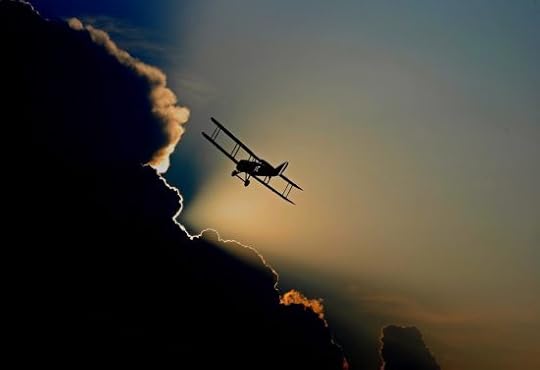
Flying an aircraft requires a pilot to comply with the proper aircraft checkout and the recency of flight requirements. There are three currency experiences to qualify for a license to fly a particular aircraft.
As prescribed by the visual flight guide and recent flight experience, the pilot should first gain the following experiences:
General Experience. A pilot should perform a minimum of three takeoffs and three landings within the next 90 days, given that the pilot takes the main control during the whole duration of the flight riding the same aircraft category, class, and type. Furthermore, the aircraft to be flown should have a tail wheel, and the takeoffs and landings should be done to a full stop in an airplane with a tail wheel.
When flying an aircraft, the pilot should only bring with him/her necessities on board. No person or properties should be carried, unless required by further rulings. Also, the pilot has the sole command of the aircraft under day VFR or visual flight rules to be able to meet the requirements of training centers.
Flights can be done through a flight simulation or flight training device, provided that it is used based on the official training course of a certified training center and it is permitted by the administrator.
Night Takeoff and Landing Experience. Flight centers require pilots to perform at least three takeoffs and three landings within 90 days. All these prerequisite flights should be made at a full stop, starting one hour immediately after sunset, and ending an hour before the sun rises.
Pilots should have the sole control of the aircraft during the visual flights, and they should perform it in aircrafts of the same group (category, class, and type). Flights should be done in a flight simulator approved by the administrator for takeoffs and landings. Visual flight paths must be permitted by the accredited flight centers.
Instrument Experience. Unless specified or further recommended by the training course, a pilot should not be held in command of an aircraft when weather conditions are below the minimum visual flight requirements. Certain instruments, like visual flight trackers, are used in these simulation flights depending on the category, class, and type of an aircraft. Pilots seeking permits to fly must undergo a training based on the aircraft he/she should be handling. He/she must accomplish at least six instrument approaches, holding procedures, and application of the navigation systems in courses involving intercepting and tracking procedures.
When it comes to visual flight rules, currency is one determination of a pilot’s efficiency in flying the plane. Being current means that a pilot has passed the Federal Aviation Regulations requirements by assuming the primary and sole command of a particular aircraft over a specific period of time. Achieving currency in flying is not based on the number of years that one has flown a plane. It is the frequency and recency of flights that matter, aside from the obvious requirement that one knows how to fly a plane of his/her choice. Applicants may visit their local flight centers to get the latest visual flight requirement guidelines and enroll for training.
Want to learn more about flying? Visit https://olshakeyflightengineer.com/blog for more details. Find more amazing stories of bravery in the skies in Gene Fish’s book Ol’ Shakey: Memories of a Flight Engineer. To know more about Gene Fish, follow him on his Facebook, Twitter, and Goodreads accounts.
References:
Avian Flight Center. “Currency.” Accessed on April 5, 2018. http://www.avianflight.com/rental/currency.php.
Aircraft Owners and Pilots Association. “Currency vs. Proficiency.” Accessed on April 5, 2018.
https://www.aopa.org/training-and-safety/active-pilots/safety-and-technique/currency-vs-proficiency.
The post What Is Currency in Relation to Visual Flight Rules? appeared first on Gene Fish.
May 18, 2018
Fly High and Land a Job in Aviation
Simple and effective guides to finally getting a job in aviation field
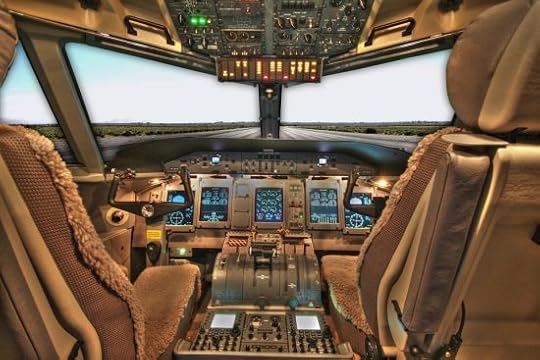
There is no better place than the airlines industry if you are looking for a travel-related career or a job in aviation. Airline industry jobs almost always require extensive travel. In addition, airlines offer exclusive travel discounts and generous benefits to their employees.
The airline sector is one of the largest industries in the world. There are more than 100 airline companies in the US alone. This means there are many job opportunities in aviation. Although airport positions may offer fewer opportunities to travel, there over ten thousand airports in the US. There are variety of airport jobs to choose from and many offer good salaries and great benefits.
The aviation industry offers plenty of opportunities and benefits for people who want to join. However, being a pilot or a technician is not always a bed of roses. Most of the time, a pilot or a flight attendant will be required to work on holidays. However, if you are really interested in getting a job in aviation industry, here are some steps to help you:
Know what you want. Do you want to apply for an aviation pilot job? How about an aviation management job? Decide which aviation job you want to pursue. Know the responsibilities and duties of your chosen position. Also, you need to know about the compensation and benefit packages for the said job in aviation
Get yourself certified. Most jobs in the aviation industry require certification. Nobody would want to ride an airplane piloted by an uncertified pilot or maintained by uncertified mechanics. Find licensed and certified schools where you can learn and earn your own certificate. Having aviation certification will open doors for you.
Entry-level. If you have no experience in working in the aviation industry, you will most likely be offered an entry-level position. This is a chance for you to grow within the career and advance.
Be ready to have wings. Opportunities in the aviation industry will shift from place to place over time. If you want to have a long and productive career or if you want to advance, you need to be mobile. It does not mean that you should relocate constantly. This just means that you have to be flexible about working in cities where the airline stations are.
Having a job in aviation may mean an exciting and fulfilling life. There are many jobs in the aviation field for you to choose from. If you dream of becoming a pilot or working in a field where there are many travel opportunities, then the aviation industry is the one you should go for.
What are your thoughts about the aviation industry? You can share your ideas and questions in the comments section below or on Facebook, Twitter, and Goodreads. You can check my blog for more articles or read my book, Ol’ Shakey: Memories of a Flight Engineer, for more aviation stories.
References:
Aerotek. ”4 Keys to Starting a Career in Aviation.” Accessed March 14, 2018. https://www.aerotek.com/insights/4-keys-to-starting-a-career-in-aviation.
BAA Training. “5 Tips How to Get Job in Aviation.” Accessed March 14, 2018. https://www.baatraining.com/5-tips-how-to-get-job-in-aviation-2/.
Soar Aviation. “Tips to Land Your First Job in Aviation as a Pilot.” Accessed March 14, 2018. https://www.soaraviation.com.au/getting-your-first-pilot-job/.
The post Fly High and Land a Job in Aviation appeared first on Gene Fish.
May 7, 2018
Getting to Know the In-Demand Careers in Aviation
Career opportunities in aviation industry
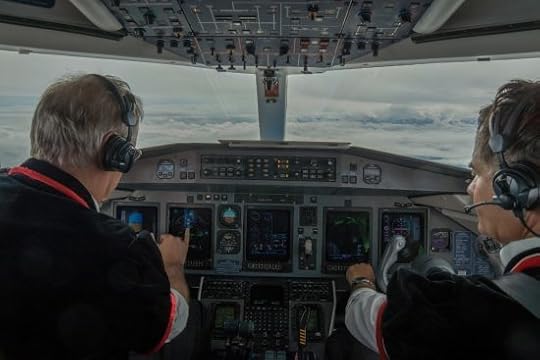
Aviation is not all about flying, as some of us believe. In truth, the aviation industry has a wide range of jobs that need to be performed expertly and with people who know-how.
There are a wide variety of career options in aviation to explore, starting from the popular job positions in the industry. The following are the top-paying aviation job positions in constant high demand:
Pilot and co-pilot. It’s the most popular job in the sky. There are at least six types of pilots operating the planes. There’s a sport pilot, recreational pilot, private pilot, commercial pilot, flight instructor, and an airline transport pilot. Each one has its own certificate that one should earn to be able to fly a particular aircraft.
Air traffic controller. It is one of the highest-paying careers in aviation, needing only an associate degree to qualify, but one job that is very stressful. It demands one’s whole attention and focus because one must track hundreds of flights and communicate with pilots, copilots, and other air traffic controllers.
Aircraft mechanic. There are many specialties to decide when one desires to become an aircraft mechanic. Due to the high demand for their expertise in many departments, there is a wide variety of career opportunities in aviation industry for this aircraft mechanics. Their tasks involve repairing and maintaining equipment that are needed to help aircrafts operate safely.
Airplane inspector. Once aircraft mechanics gain ample years of exceptional service, they will be promoted to airplane inspector. Their job is to give inspection to the planes right after any maintenance and minor and major repairs and overhauls.
Sky marshal or air marshal. Their role is very important in terms of security and order in every aircraft. They stand guard against any attackers that may threaten the lives of the crew, plane, and passengers.
Flight attendant. A career in aviation that requires an excellent communication and interpersonal skills, flight attendants make sure that passengers are safe and comfortable in their seats. They also secure the flight deck where the pilots are located.
Aside from the previously mentioned jobs, there are other careers in aviation that are currently in high demand. The highest so far are careers that involve business operations, accounting and finance, avionics, engineering, electrics, ground operations, internships, manufacturing and fabrication, management, sales and marketing, technical, and maintenance.
There is always a place in the aviation industry for those who are most passionate and dedicated in achieving their dreams. It may take time to land a job immediately in one of the careers in aviation, but it will all be worth it once opportunity chooses the right person for the job.
Find more helpful tips on landing a great aviation career that is best fit for you. Visit Gene Fish’s Facebook, Twitter, and Goodreads and don’t forget to hit Like and Follow. Also, read more of his aviation adventures in his memoir, Ol’ Shakey, available in selected online bookstores. Good luck in finding your dream job!
References
McKay, Dawn Rosenberg. 2017. “Flight Attendant.” The Balance, July 19. Accessed February 8, 2018. https://www.thebalance.com/flight-attendant-526020.
Martin, Erica. 2016. “6 Different Types of Pilot Certifications.” Phoenix East Aviation, November 10. Accessed February 8, 2018. https://www.pea.com/blog/posts/6-different-types-pilot-certifications/.
AviationCV.com. 2017. “The 5 Highest Paying Jobs in Aviation.” Accessed February 8, 2018. https://www.aviationcv.com/aviation-blog/2017/5-highest-paying-jobs-aviation.
Avjobs, Inc. 2018. “Aviation Job Availability Statistics for February 2018.” Accessed February 8, 2018. https://www.avjobs.com/jobs/view-jobs-stats.asp.
The post Getting to Know the In-Demand Careers in Aviation appeared first on Gene Fish.
April 23, 2018
Military Aid in Disaster Relief
Disaster relief services: Is military response the last resort?

When catastrophe strikes, response has to be quick, appropriated, and coordinated to ensure that exigency is mitigated by successful delivery of aid and relief. The devastating and surprising nature of calamities calls for greatly coordinated disaster relief services on a very short notice. While the initial responsibility of disaster relief lies with local disaster relief agencies, only military units have the manpower, training, and equipment to undertake and execute relief effort needed to recover from the catastrophic incident.
There’re different factors driving the increasing interest of the army when it comes to disaster relief. From improving the army’s image to providing training opportunities to diversify their role, especially when military units are experiencing budget cuts across the globe, several factors drive the growing engagement of the military in disaster relief programs.
The role
The military becomes extensively involved when disasters strike communities. As they often arrive at the scene after the first responders such as the paramedics, law enforcement officials and even volunteers from the locality, their role considerably differs from the first responders. Yet these army units are usually the key to restoring safety, order, and confidence to communities affected by the disasters. Here’s a quick rundown of military’s role in disaster management.
Supplies and support: Sometimes, an emergency situation becomes so critical that the first responders can’t manage the relief all on their own and thus, it might become necessary to seek help from the local military unit so that the response can be supplemented and made more effective. This mostly happens in larger communities, especially bigger cities that have been severely affected by the catastrophe. Because of their robust strength and modern equipment, army units are more capable of moving into communities to lending a helping hand in search operations and recovery activities along with providing supplies and medical care.
Restoring law and order: In some cases, the crisis is less about a natural calamity and more about manmade hazards such as riots or looting that pose a major safety threat to communities. In most of these cases, such incidents become difficult for local law enforcement agencies to control. They may’ve lost their trust within the community, or their numbers may be too small to stop the dangerous rioting and associated damages effectively that poses a serious threat to the residents. In this case, prompt action from military units can mitigate the problem and help to reverse the course of damage. Here, the army acts as a supplemental police force to keep protesters and rioters at bay.
Given the increasing involvement of military units in relief activities, authorities have the responsibility and opportunity to engage the army more strategically. The key question for them has transformed from whether to engage the military to how and when to do so.
What do you think about involvement of military units in disaster management? Feel free to share your thoughts in the comments section below. You can also contact me on other social channels like Facebook, Twitter, and Goodreads to keep the conversation going.
References
Hudson, Laura, and Hofmann, Charles-Antoine. 2009. “Military responses to natural disasters: last resort or inevitable trend?” Humanitarian Practice Network. Accessed March 23, 2018. https://odihpn.org/magazine/military-responses-to-natural-disasters-last-resort-or-inevitable-trend/.
Army-Technology.com. “Disaster Response: The Role of a Humanitarian Military.” Last modified July 25. Accessed March 23, 2018. https://www.army-technology.com/features/feature125223/.
The post Military Aid in Disaster Relief appeared first on Gene Fish.



